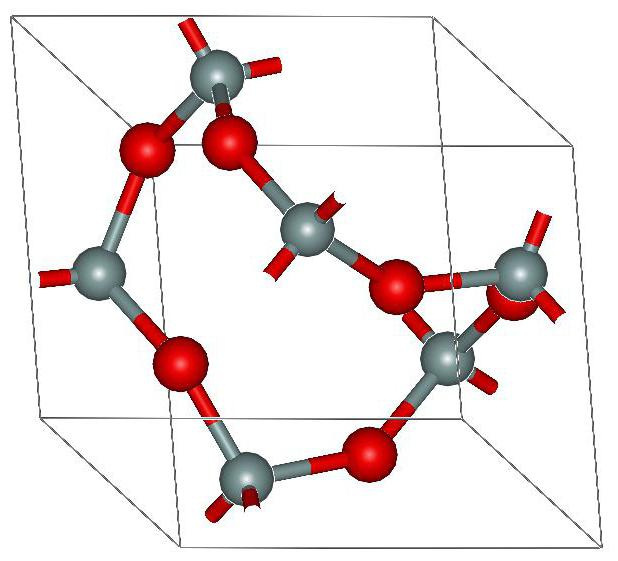Sodium oxide
Sodium is most common innature and widely used alkali metal, occupying the 11th place in the Mendeleev's table (it is in the 1st group, the main subgroup, the 3rd period). When interacting with oxygen in the air, it forms Na2O2 peroxide. Can you say that this is the highest sodium oxide? Of course, no, since this substance does not belong to the class of oxides, and its structural formula is written in this form: Na-O-O-Na. The highest are called oxides, in which a chemical element associated with oxygen has a higher degree of oxidation. Sodium has only one degree of oxidation, equal to +1. Therefore, for this chemical element, the concept of "higher oxide" does not exist.
Sodium oxide is an inorganic substance,the molecular formula of its Na2O. The molar mass is 61.9789 g / mol. The density of sodium oxide is 2.27 g / cm³. In appearance, this white solid non-flammable substance, which melts at a temperature of plus 1132 ° C, boils at a temperature of plus 1950 ° C and at the same time decomposes. When dissolved in water, the oxide reacts violently with it, resulting in the formation of sodium hydroxide, which should be properly called hydroxide. This can be described by the reaction equation: Na2O + H2O → 2NaOH. The main danger of this chemical compound (Na2O) is that it reacts violently with water, which results in aggressive caustic alkali.
Sodium oxide can be obtained by heatingmetal to a temperature not exceeding 180 ° C in a medium with a low oxygen content: 4Na + O2 → 2Na2O. In this case, it is not possible to obtain pure oxide, since the products of the reaction will contain up to 20% peroxide and only 80% of the target substance. There are other ways of obtaining Na2O. For example, when a mixture of peroxide with an excess of metal is heated: Na2O2 + 2Na → 2Na2O. In addition, the oxide is produced by the reaction of metallic sodium with its hydroxide: 2Na + NaOH → 2Na2O + H2 ↑, and also by the interaction of a nitrous acid salt with an alkali metal: 6Na + 2NaNO2 → 4Na2O + N2 ↑. All these reactions take place with an excess of sodium. In addition, by heating the alkali metal carbonate to 851 ° C, carbon dioxide and the oxide of this metal can be obtained by the reaction equation: Na2CO3 → Na2O + CO2.
Sodium oxide has pronounced basicproperties. In addition to the fact that it reacts violently with water, it also actively interacts with acids and acid oxides. As a result of the reaction with hydrochloric acid, salt and water are formed: Na2O + 2HCl → 2NaCl + H2O. And when interacting with colorless crystals of silicon dioxide, an alkali metal silicate is formed: Na2O + SiO2 → Na2SiO3.
Sodium oxide, like the oxide of another alkalinemetal - potassium, of great practical importance does not matter. This substance is usually used as a reagent, it is an important component of industrial (soda-lime) and liquid glass, but is not included in the composition of optical glasses. Typically, industrial glass contains about 15% sodium oxide, 70% silica (silicon dioxide) and 9% lime (calcium oxide). Carbonate Na serves as a flux to reduce the temperature at which silicon dioxide melts. Soda glass has a lower melting point than potassium-lime or potassium-lead. It is the most common, it is used for making window glass and glass containers (bottles and jars) for drinks, food and some other goods. Glassware is often made of tempered sodium-calcium-silicate glass.
Soda-silicate glass is produced by meltingraw materials - carbonate Na, lime, dolomite, silica (silica), alumina (alumina), as well as a small number of agents (for example, Na sulphate, Na chloride) in a glass furnace at temperatures up to 1675 ° C. Green and brown bottles are obtained from raw materials containing iron oxide. The amount of magnesium oxide and sodium oxide in the tar glass is less than in glass, which is used for the manufacture of windows.

